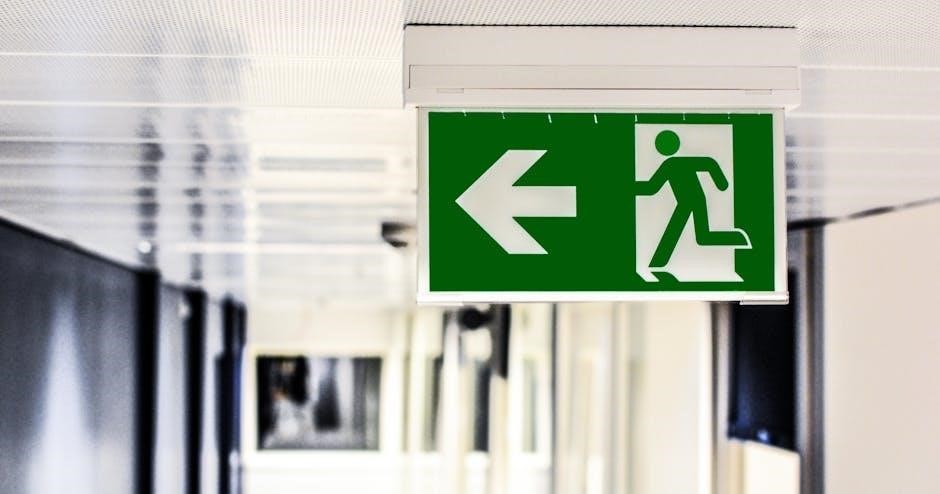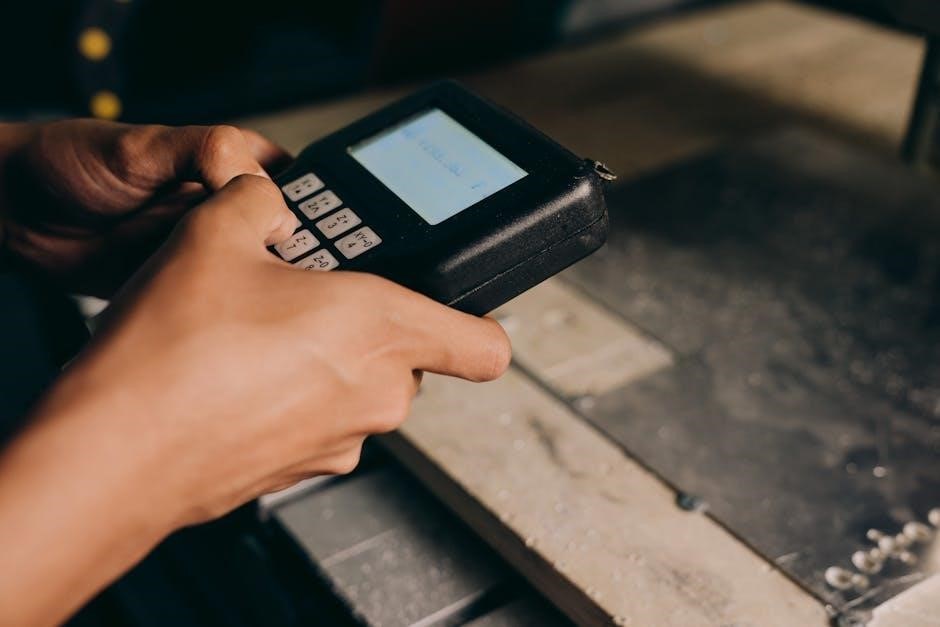instructions for form 8288
Form 8288: A Comprehensive Guide (Updated December 12, 2025)
Form 8288 instructions underwent revision in January 2023, offering detailed guidance for reporting dispositions of U․S․ real property interests and withholding taxes․
These instructions are crucial for accurate filing․
What is Form 8288?

Form 8288, U․S․ Withholding Tax Return for Dispositions of Real Property Interests, is a crucial IRS form used to report the disposition of U․S․ real property interests (USRPIs) by foreign persons․ It’s also utilized for reporting FICA (Federal Insurance Contributions Act) taxation of unpaid deferred compensation and payments of nonqualified deferred compensation․

Essentially, this form ensures that taxes are properly withheld when a foreign individual or entity sells or otherwise disposes of property located within the United States; The form details the transaction, the amount of tax withheld, and the identities of both the transferor (seller) and transferee (buyer)․
Recent updates, particularly those reflected in the January 2023 revisions to the instructions, clarify reporting requirements for specific scenarios․ These revisions address changes related to reporting deferred compensation via box 11 of Form W-2․ Understanding the form’s purpose and the latest instructions is vital for compliance, avoiding penalties, and ensuring accurate tax reporting․
Purpose of Form 8288
The primary purpose of Form 8288 is to facilitate the withholding of tax under sections 1445 and 1446 of the Internal Revenue Code․ Section 1445 addresses withholding on dispositions of USRPIs (U․S․ Real Property Interests) to foreign persons․ This ensures tax liability is met when a foreign entity sells U․S․ property․
Section 1446 concerns withholding on distributions of effectively connected income to foreign persons․ This includes situations involving FICA taxation of unpaid deferred compensation․ The form’s instructions detail how to calculate and remit these withholdings to the IRS․
Furthermore, Form 8288 serves as a reporting mechanism for these transactions, providing the IRS with essential information for tax administration․ The January 2023 revisions to the instructions specifically address reporting requirements related to nonqualified deferred compensation reported in box 11 of Form W-2; Accurate completion and timely filing are crucial for avoiding penalties and maintaining compliance with U․S․ tax laws․
Who Must File Form 8288?
Generally, any transferee – the buyer of a U․S․ real property interest or the distributor of effectively connected income – who is required to withhold tax under sections 1445 or 1446 must file Form 8288․ This includes individuals, corporations, partnerships, estates, and trusts․
Specifically, if you acquire a USRPI from a foreign person, you are obligated to file․ Similarly, if you distribute income effectively connected with a U;S․ trade or business to a foreign person, filing is necessary․ Companies reporting nonqualified deferred compensation or FICA taxation of unpaid deferred compensation via box 11 of Form W-2 are also required filers․
The instructions clarify that even if no withholding is required due to an exemption or treaty, a return may still be necessary to report the transaction․ Amended returns, such as Form 8288-A, also necessitate filing under specific circumstances, as detailed in the IRS instructions․
Section 1445 Withholding
Section 1445 of the Internal Revenue Code mandates withholding tax on the disposition of U․S․ Real Property Interests (USRPI) by foreign persons․ Form 8288 is used to report this withholding․ The buyer (transferee) is generally responsible for withholding 15% of the gross sale price․

The instructions for Form 8288 detail what constitutes a USRPI, encompassing land, buildings, and certain personal property associated with real estate․ Withholding is required when acquiring such interests from a foreign person․
A transferee must file Form 8288 and remit the withheld tax to the IRS within 20 days of the transfer date․ The instructions emphasize that withholding applies even if the seller is exempt from tax under a treaty, though a refund claim may be possible․ Careful adherence to the instructions is vital for compliance․
Section 1446 Withholding
Section 1446 requires withholding tax on dispositions of interests in U․S․ real property by foreign persons, specifically focusing on interests not subject to Section 1445․ Form 8288 is the vehicle for reporting and remitting this tax․ The instructions clarify that this section applies to transfers of stock in a U․S․ real property holding corporation․
The Form 8288 instructions detail the specific types of interests subject to Section 1446 withholding, including stock in domestic entities that hold USRPIs․ Withholding rates generally mirror those under Section 1445 – typically 15% of the gross sale price․
Transferees must file Form 8288 and transmit the withheld funds to the IRS within 20 days following the transfer date․ The instructions also address amended returns and processing procedures for Form 8288-A, crucial for accurate reporting and compliance with IRC 1446(f)․
Understanding the January 2023 Revisions

The January 2023 revisions to Form 8288 instructions primarily addressed clarifications regarding reporting requirements for nonqualified deferred compensation and FICA taxation of unpaid deferred compensation․ These changes stemmed from updates to box 11 of Form W-2, impacting how companies report these payments․
The updated instructions define key terms and provide specific guidance on completing various sections of Form 8288 when dealing with deferred compensation․ They emphasize the importance of accurately identifying and reporting these payments to ensure compliance with tax regulations․
Furthermore, the revisions included updates to the processing of amended Form 8288-A, offering clearer guidance for correcting prior filings․ The IRS released an early draft in December 2023, signaling the scope of these changes․ Taxpayers should consult the latest instructions available on the IRS website for complete details․
Key Filing Deadlines

Regarding Form 8288, a critical deadline involves the timely transmission of tax withheld to the IRS․ For Section 1445 withholding, the transferee must file Form 8288 and remit the tax within 20 days following the date of transfer of the U․S․ real property interest․ This 20-day rule is consistently emphasized in the instructions․
Similarly, for Section 1446 withholding, adherence to specific deadlines is crucial․ While the general rule mirrors the 20-day timeframe, complexities can arise with distributions, necessitating careful review of the instructions․ Amended Form 8288-A processing also has its own timeline, requiring prompt action to correct prior filings․
It’s important to note that key filing deadlines can vary depending on the specific transaction․ Therefore, consulting the official IRS instructions or seeking professional tax advice is highly recommended to ensure compliance and avoid potential penalties․ Staying updated with the latest IRS guidance is essential․
Line-by-Line Instructions: General Information
The Form 8288 instructions provide detailed guidance for each line, ensuring accurate reporting․ Line 3 requires the date of transfer, while Line 4 asks for the date of the withholding certificate or distribution date – referencing the instructions for clarification․ Line 5 necessitates specifying the number of attached Forms 8288-A or 8288-C, which detail specific withholding information․
The instructions define key terms and explain reporting requirements for nonqualified deferred compensation․ They also address FICA taxation of unpaid deferred compensation, guiding users through the relevant calculations and reporting procedures․ Careful attention to these definitions is vital for correct completion․
The IRS emphasizes the importance of referencing the instructions throughout the form․ They provide context, examples, and explanations to assist taxpayers in navigating the complexities of Sections 1445 and 1446․ Utilizing the official guidance is paramount for avoiding errors and ensuring compliance․
Date of Transfer and Withholding Certificate

Form 8288, Line 3, requires the precise “Date of Transfer,” representing when the U․S․ real property interest (USRPI) was acquired by the transferee․ This date is critical for determining withholding obligations under Section 1445․ Line 4 demands the “Date of Withholding Certificate or Date of Distribution,” referencing the instructions for specific scenarios․
The instructions clarify that if a withholding certificate is provided, that date is entered․ However, if a distribution occurs instead, the date of that distribution must be reported․ This distinction is vital for accurate tax reporting․ Transferees must file Form 8288 and remit withheld taxes to the IRS within 20 days of the transfer date․
Understanding these dates is paramount․ Even if no withholding is required, filing Form 8288 is still necessary․ The instructions emphasize the importance of accurate date reporting to avoid penalties and ensure compliance with U․S․ tax laws․ Consult the IRS guidance for detailed explanations and examples․
Number of Attached Forms 8288-A or 8288-C
Form 8288, Line 5, specifically requests the “Number of Forms 8288-A or 8288-C attached․” This line is crucial for the IRS to verify the completeness of your filing․ Form 8288-A, “Statement of Withholding Under Section 1445,” details the withholding of tax on dispositions of USRPIs․ Form 8288-C, “Statement of Withholding on Dispositions by Foreign Persons Under Section 1446,” reports withholding related to dispositions of interests in U․S․ real property by foreign corporations․
The instructions clearly state that if you are reporting withholding under Section 1445, you must attach Form 8288-A for each buyer․ Similarly, if reporting under Section 1446, attach Form 8288-C for each applicable transaction․ Accurate completion of this line ensures the IRS can properly reconcile the information․
Failing to attach the correct number of supporting forms can lead to processing delays or even rejection of your Form 8288․ Always double-check the number of attached forms against the number of transactions reported to avoid issues․ Refer to the official IRS instructions for detailed guidance․
Reporting Nonqualified Deferred Compensation

Form 8288 plays a vital role in reporting payments of nonqualified deferred compensation (NQDC)․ Companies utilizing box 11 of Form W-2 in 2023 to report NQDC or FICA taxation of unpaid deferred compensation must pay close attention to the Form 8288 requirements․ The instructions define NQDC as compensation deferred beyond the end of the year it is earned․
When reporting NQDC, the transferee (typically the recipient of the deferred compensation) is responsible for filing Form 8288 and transmitting any associated tax withheld to the IRS․ The instructions emphasize the importance of accurately reporting the date of transfer and the amount of tax withheld․

The IRS instructions clarify that even if no tax was actually withheld, Form 8288 must still be filed to report the transfer of the deferred compensation․ Proper reporting ensures compliance with tax regulations and avoids potential penalties․ Consult the official IRS guidance for specific details and examples related to NQDC reporting․
FICA Taxation of Unpaid Deferred Compensation
Form 8288 is crucial when reporting FICA (Federal Insurance Contributions Act) taxation on unpaid deferred compensation․ Companies reporting this on Form W-2, box 11, in 2023, need to adhere to specific instructions outlined by the IRS․ The instructions detail how to calculate and report the FICA taxes due on deferred compensation that hasn’t yet been paid to the employee․
The IRS instructions clarify that the transferee, responsible for filing Form 8288, must accurately report the amount of FICA tax withheld and transmit it to the IRS; This reporting is essential for ensuring correct tax collection on deferred income․ The January 2023 revisions to Form 8288 specifically address these FICA tax reporting requirements․
It’s vital to consult the official IRS guidance for detailed instructions on calculating FICA taxes on unpaid deferred compensation and completing Form 8288 correctly․ Proper reporting avoids potential penalties and ensures compliance with federal tax laws․ Remember to check for updates to the instructions annually․
Amended Form 8288-A Processing
Form 8288-A, when amended, requires specific processing procedures as detailed in the IRS instructions․ Internal Processing Unit (IPU) 25U0415 provides guidance for handling these amended forms․ The instructions emphasize that procedures for amended Form 8288-A differ from those for original filings․

Notably, the IRS instructions differentiate processing based on the relevant Internal Revenue Code (IRC) section․ For IRC 1446(f) returns before January 1, 2023, different procedures apply compared to those after that date․ This distinction is crucial for accurate processing and compliance․
Tax professionals and filers should carefully review the IRS instructions regarding amended Form 8288-A submissions․ These instructions outline the necessary documentation, filing procedures, and any specific requirements for corrections․ Staying updated with the latest IRS guidance ensures proper handling of amended returns and avoids potential delays or rejections․ Always refer to the official IRS resources for the most current information․
Where to Find Official Instructions
Locating the official instructions for Form 8288 is paramount for accurate completion and filing․ The Internal Revenue Service (IRS) provides comprehensive guidance directly on its website, ensuring taxpayers have access to the most up-to-date information․
To find these instructions, visit www․irs․gov/Form8288․ This dedicated webpage hosts the official Form 8288, along with its accompanying instructions in a downloadable PDF format․ The IRS regularly updates these instructions to reflect changes in tax law and regulations, with the latest revision occurring in January 2023․
Furthermore, the IRS website offers a wealth of related resources, including FAQs, publications, and other helpful materials․ Utilizing the official IRS website guarantees access to authoritative guidance, minimizing errors and ensuring compliance․ Remember to always consult the official instructions before preparing and submitting Form 8288, as interpretations from other sources may be outdated or inaccurate․
Resources for Form 8288 (IRS Website)
The IRS website provides a robust collection of resources to assist taxpayers in understanding and completing Form 8288․ Beyond the core form and instructions, several supplementary materials are readily available․ These include frequently asked questions (FAQs) addressing common queries about withholding requirements and reporting obligations․
Taxpayers can also access relevant IRS publications that delve deeper into specific aspects of Section 1445 and 1446 withholding․ These publications offer detailed explanations and examples to clarify complex tax rules․ The website features downloadable PDFs of Form 8288-A and Form 8288-C, essential for reporting dispositions and withholding certificates, respectively․
Furthermore, the IRS provides links to related tax forms and instructions, ensuring a comprehensive understanding of the broader tax landscape․ Regularly checking www․irs․gov/Form8288 for updates and revisions is crucial, as tax laws and regulations are subject to change; Utilizing these resources empowers taxpayers to navigate the complexities of Form 8288 with confidence․
Common Errors to Avoid When Filing
When completing Form 8288, several common errors can lead to processing delays or penalties․ A frequent mistake involves incorrect calculations of the withholding amount required under Section 1445 or 1446․ Carefully review the instructions to ensure accurate application of withholding rates․
Another common error is failing to attach the necessary supporting documentation, such as Form 8288-A or Form 8288-C․ Ensure all required forms are included with your submission․ Misreporting the date of transfer or the date of the withholding certificate is also a frequent issue; double-check these dates against the original documentation․
Taxpayers sometimes overlook the filing deadlines, resulting in late filing penalties․ Remember to file Form 8288 by the 20th day after the date of transfer․ Finally, neglecting to utilize the latest instructions, particularly those revised in January 2023, can lead to errors․ Always refer to the most current IRS guidance․
















































































